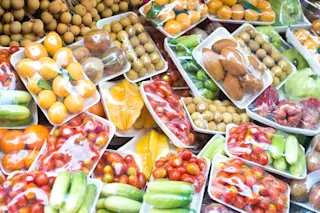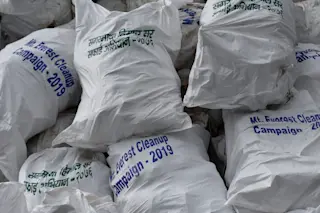
When it comes to greenhouse gas emissions, any fossil fuel looks bad compared to wind, solar, and even nuclear power sources. But how do fossil fuels stack up against one another? Natural gas is a lot better emissions-wise compared to coal, according to a new report, and may serve as a temporary coal stand-in over the coming decades, until the cost of alternative energy sources comes down. The MIT Energy Initiative drafted an 83-page report that looked both at the United States' natural gas supply and the fuel's possibility to reduce greenhouse gas emissions. Over the past two years, the MIT group discussed natural gas use with industry leaders, environmental groups, and government officials. They presented their findings and recommendations to legislators and senior administration officials in Washington last week.
“Much has been said about natural gas as a bridge to a low-carbon future, with little underlying analysis to back up this contention. The analysis in this study provides the confirmation—natural gas truly is a bridge to a low-carbon future,” said MITEI Director Ernest J. Moniz in introducing the report. [MIT News]
The report's main points: Emissions Compared to Coal Currently, the United States gets almost half of its power from coal, but the team expects this to change as cap and trade schemes or other regulations make traditional coal plants' emissions too costly. Regulations and increasing fuel costs, the report forecasts, will lead to a 30 percent increase in electricity prices by 2030 and 45 percent increase by 2050. Imagining a future where carbon emission rules require industrialized nations to reduce CO2 emissions by 50 percent by 2050, the report's authors say that natural gas will become preferable to coal use and mostly displace it.
"Because national energy use is substantially reduced [given the team's carbon emissions pricing-scheme], the share represented by gas is projected to rise from about 20 percent of the current national total to around 40 percent in 2040," said the MIT researchers. When used to fire a power plant, gas emits about half of the carbon dioxide emissions as conventional coal plants. [New York Times]
Total Natural Gas Supply The report estimates the United States' natural gas deposits at about 2,000 trillion cubic feet (15,000 trillion gallons), including "unconventional sources" such as natural gas produced from shale. Given current domestic consumption rates, the researchers expect that this could last the country for 92 years. The report also looked at the total amount of natural gas available beyond North America. They estimate this supply at 16,200 trillion cubic feet (121,000 trillion gallons), excluding the US and Canada and unconventional sources. The report's authors believe the global supply could last for 160 years given current global consumption. Natural Gas Risks? The report acknowledges that there are risks to increasing natural gas use--in particular, there are risks associated with the "unconventional" gas reserves in shale deposits. To extract this natural gas requires drilling that can lead to problems such as shallow freshwater aquifer contamination, surface water contamination, and community disturbance, due to drilling and fracturing activities. As reported by Treehugger, filmmaker Josh Fox has portrayed some of the dangers of hydraulic fracturing--called "fracking"--in his new documentary, Gasland. In one scene from his film, an affected resident sets his tap water on fire (see trailer below). Some publications have also zeroed in on the risks of unconventional gas reserves; a Vanity Fair article looks at a Pennsylvania town transformed by fracking, while the investigative journalists of ProPublica have published a series of articles on the environmental hazards of gas drilling. But the MIT report maintains that regulations should be sufficient to manage the risks. Cautious Optimism The report's authors also reiterate that natural gas is not a solution, but could help the nation transition to greener energy sources.
"Though gas frequently is touted as a 'bridge' to the future, continuing effort is needed to prepare for that future, lest the gift of greater domestic gas resources turn out to be a bridge with no landing point on the far bank," the report says. [Scientific American via ClimateWire]
As the price of solar and wind power decrease and regulation increases, the report's authors suspect that even natural gas will be too costly by 2050, forcing the move to a low-carbon future.
“In the very long run, very tight carbon constraints will likely phase out natural gas power generation in favor of zero-carbon or extremely low-carbon energy sources such as renewables, nuclear power or natural gas and coal with carbon capture and storage. For the next several decades, however, natural gas will play a crucial role in enabling very substantial reductions in carbon emissions.” [MIT News]
Related Content: 80beats: Will Methane Gas in Gulf Waters Create a Massive Dead Zone? 80beats: Methane Gas Explosion Blamed for West Virginia Coal Mining Accident 80beats: Did a Natural Gas Operation Cause a Spasm of Texas Earthquakes? DISCOVER: Nations Stake Their Claims to a Melting Arctic, on the oil and gas rush DISCOVER: 10 Ways Methane Could Brake Global Warming--or Break the Planet
Image: flickr / AZAdam













